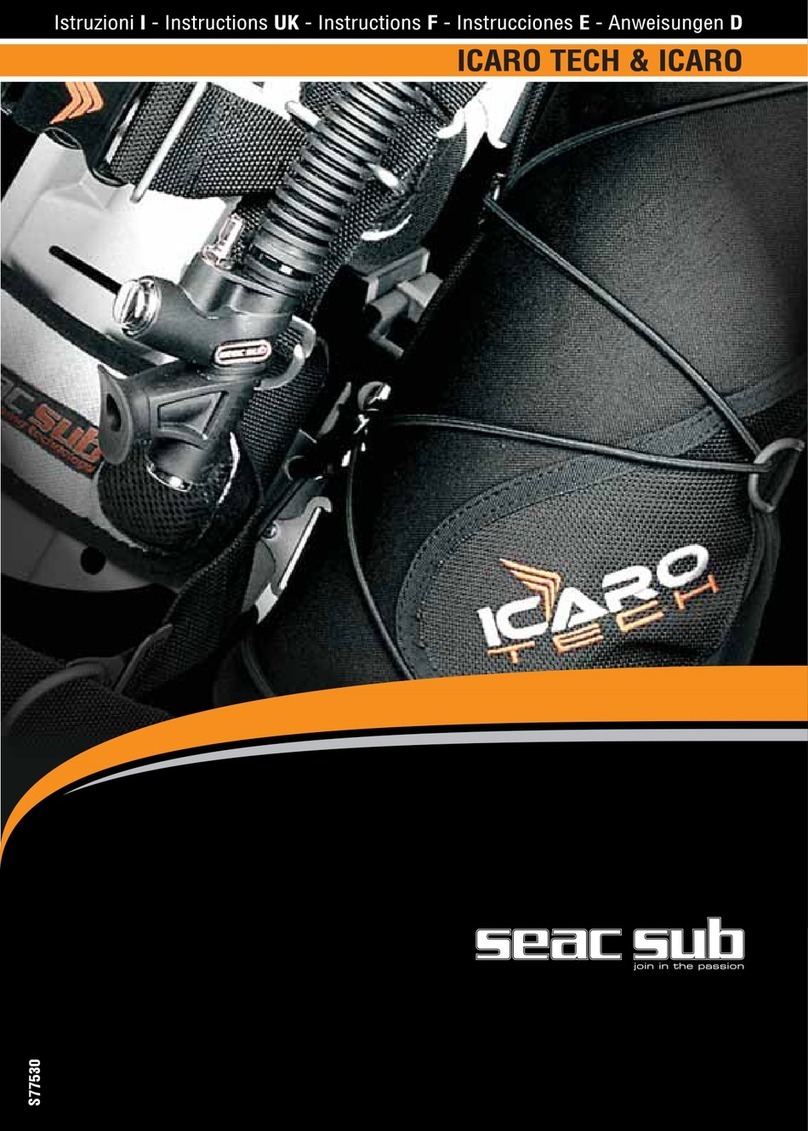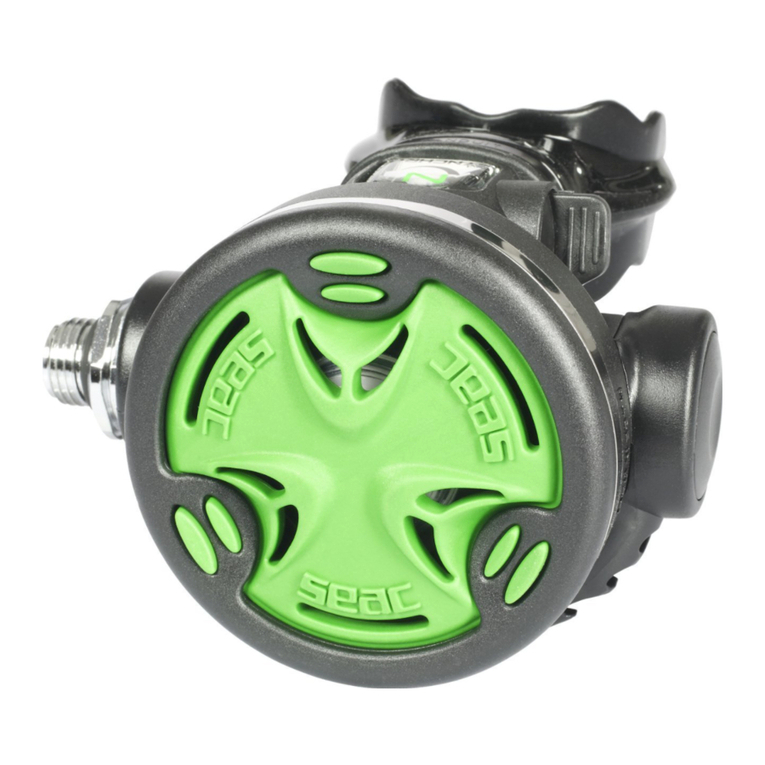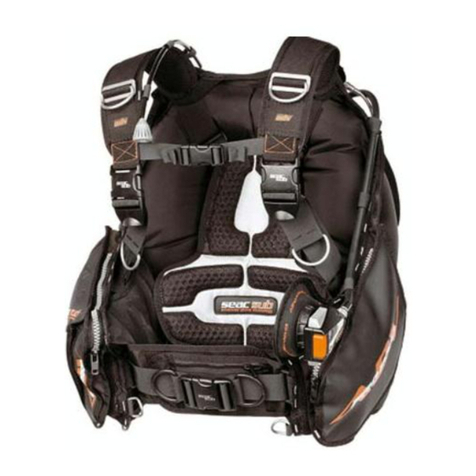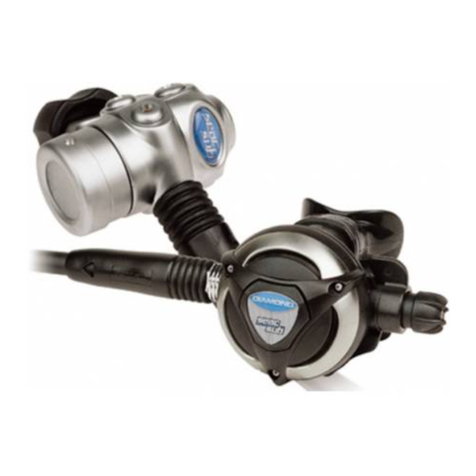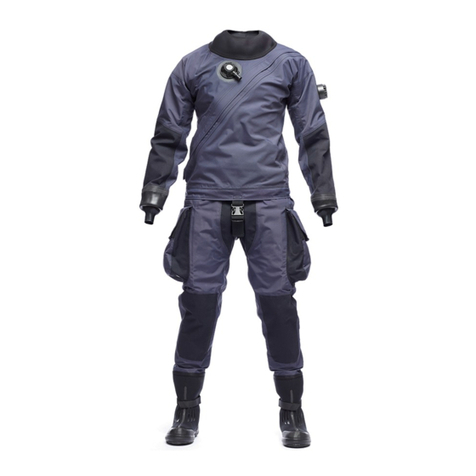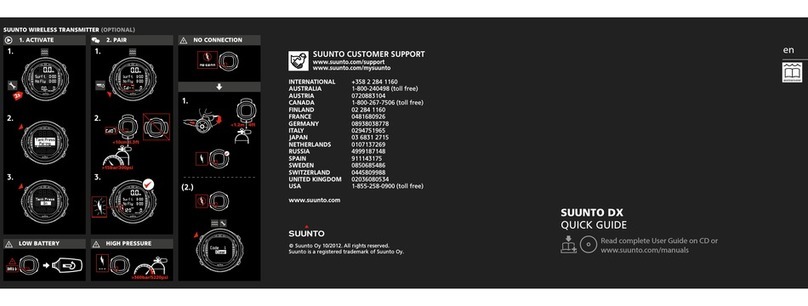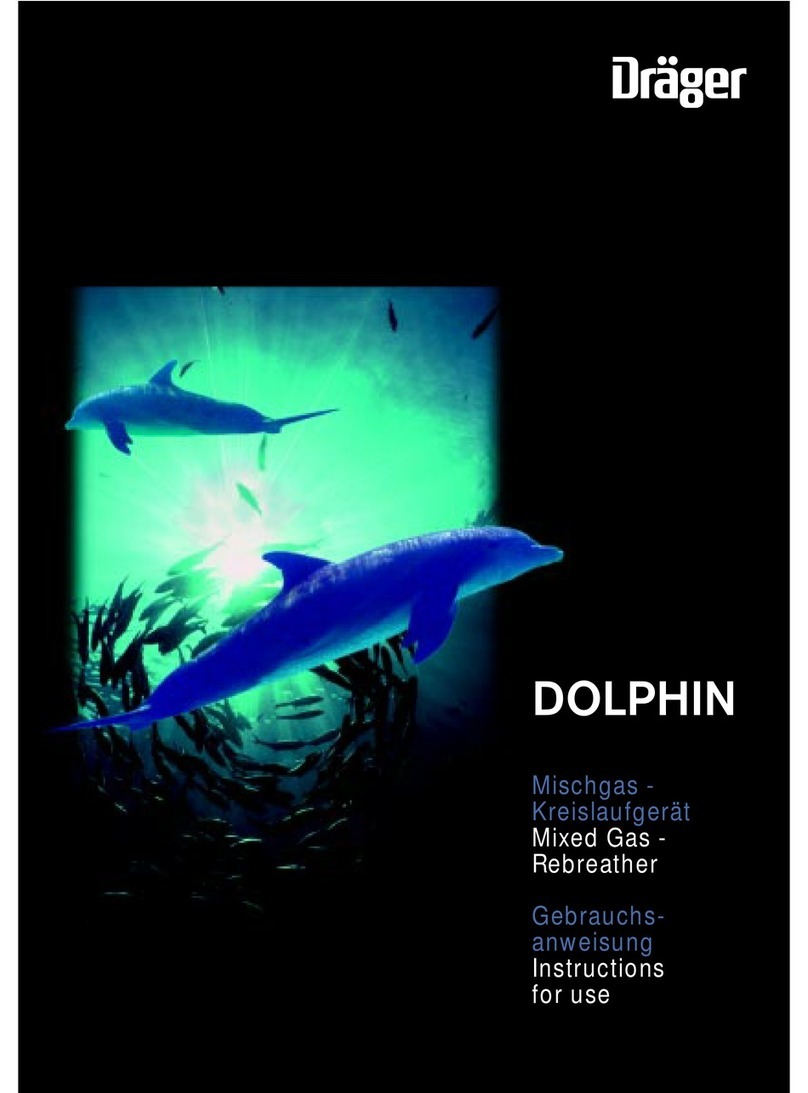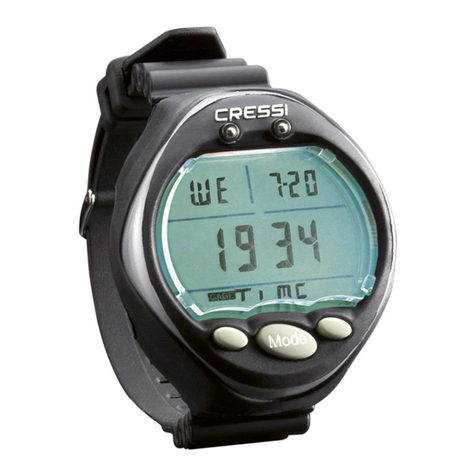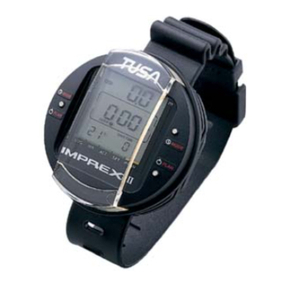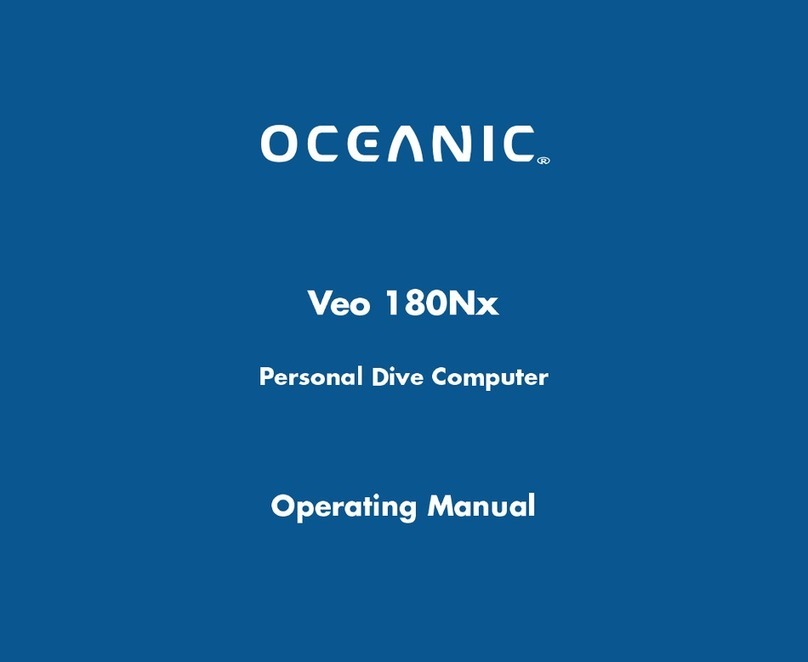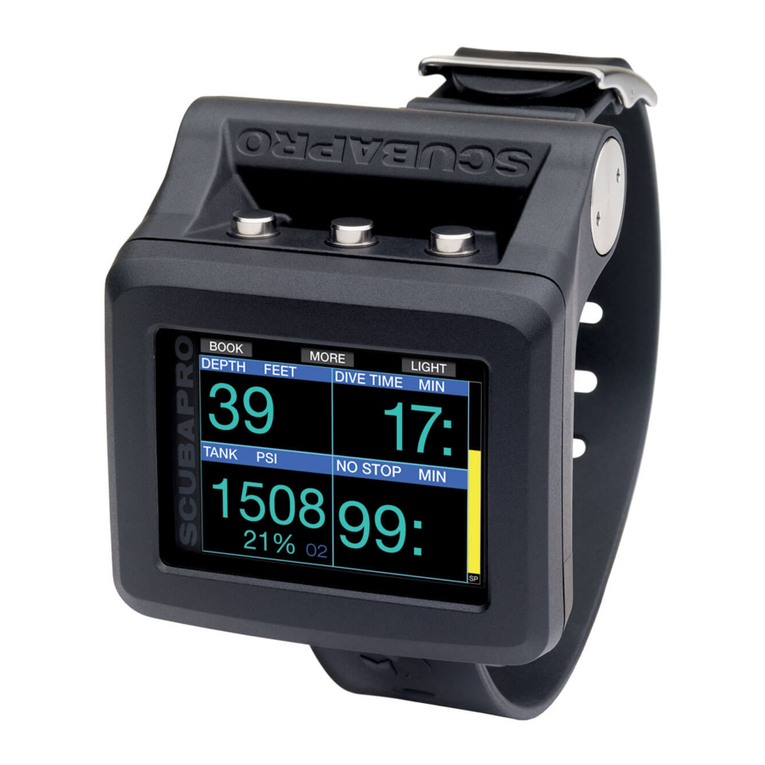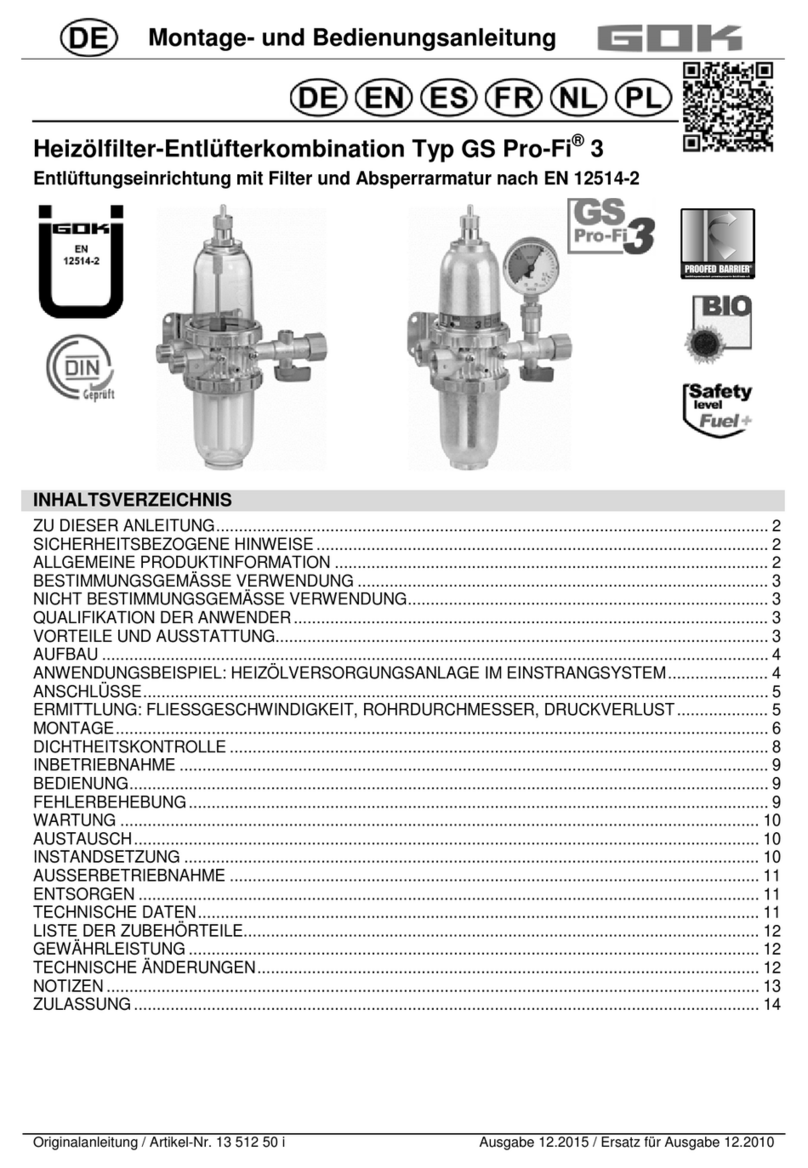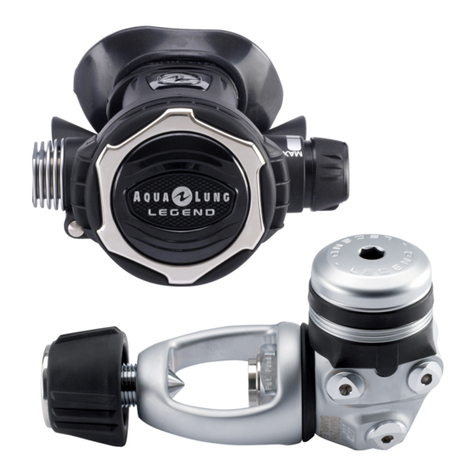Seac Sub Diamond User manual

Diamond Ice
Diamond
Diamond Octo
Diamond Ice
Diamond
Diamond Octo
ISTRUZIONI
INSTRUCTIONS
INSTRUCTIONS
INSTRUCCIONES
ANWEISUNGEN
I
I
UK
F
E
D
ISTRUZIONI
INSTRUCTIONS
INSTRUCTIONS
INSTRUCCIONES
ANWEISUNGEN

EROGATORI
REGULATORS
DETENDEUR
REGULADOR
ATEMREGLER
Diamond Ice
Diamond
Diamond Octo
SEAC DIVING PRO srl
Via D. Norero, 29
16040 San Colombano Certenoli (GE), Italy
Tel. +39 (0185) 356301
Fax. +39 (0185) 356300
Info: [email protected]
Web Page: www.seacsub.com
0474 - EN 250 : 2000
INDEX
ITALIANO pag. 5
ENGLISH pag. 13
FRANÇAIS pag. 21
ESPANOL pag. 29
DEUTSCH pag. 37

SEAC SUB ENGLISH
15
SEAC SUB ENGLISH
14
PURPOSE - DEFINITIONS - LIMITS
The purpose of the requirements and tests
specified by standard EN 250: 2000 is to en-
sure a minimum safety level for the operation
of Self-Contained Underwater Breathing Ap-
paratus (SCUBA) at a maximum depth of 50
meters.
SCUBA Definition:
Compressed-air open-circuit underwater breath-
ing apparatus contained in a cylinder.
SCUBA - MINIMUM EQUIPMENT REQUIRED
(EN 250 : 2000)
1. Cylinder body and valve assembly (cylinder
assembly)
2. Regulator
3. Pressure gauge or pressure control, reserve
or alarm device
4. System for cylinder support, transport and
connection to the diver (back-piece and/or
straps)
5. Head equipment (mouthpiece or complete
mask or diving helmet)
6. Instructions for use
SCUBA - Component assemblies (EN 250 : 2000)
The Scuba may consist of separate compo-
nent assemblies, such as:
Cylinder assembly, Regulator, Pressure
gauge, Support-transport system.
Cylinder assembly defines the assembly of
cylinder body, valve and tank boot, if any.
The Seac Diving Pro regulators described
in this handbook are to be used in the
SCUBA assembly and are certified in com-
pliance with European Directive 89/686/EC
and standard EN 250 : 2000.
The compressed air contained in the cylin-
der assembly shall comply with the requi-
rements for breathable air defined in EN
12021 : 1998
Warning!
The following instructions shall be integrated
with the ones relevant to the other compo-
nents of your SCUBA. Before using your SEAC
SUB regulator, read carefully all the instruc-
tions for use contained in the relevant hand-
books.
Congratulations for choosing the
quality and reliability of a Seac Diving
Pro product. The equipment you bought
was produced using selected and tested
materials. Our constant evolution
results from continuous research and
development. Innovative production
processes, constant testing and actual
functionality tests developed at our
research centre guarantees the
reliability characterizing all Seac Diving
Pro products.
Warning!
This booklet is not a diving manual!
Read the whole instruction
handbook before using this
equipment!
This manual for use must be
preserved for the whole life of the
product!
General Instructions
Before using the regulator or any other
products for underwater diving, you
should attend a course held by qualified
instructors and obtain the relevant diving
certificate. The use of diving equipment by
non certified divers is dangerous and can
lead to serious accidents, or even death, to
the diver and his/her diving mates.
During the assembly and regulation of the
regulator, every step was taken to ensure
high reliability of the product in time.
These steps however may become ineffec-
tive if the regulator is not used correctly and
if adequate maintenance is not provided.
Seac Diving Pro s.r.l declines any liability
for any problem arising from non-compli-
ance with the instructions contained in
this handbook.
For any other problem, please contact your
dealer or directly Seac Diving Pro. Only la-
boratories authorized by Seac Diving Pro
may carry out repairs or maintenance.
Seac Diving Pro diving regulators are the
result of a research carried out in close co-
operation with many professional divers.
Their innovative features ensure a reliabi-
lity which remains unchanged even after a
long series of dives. At the same time, their
easy mechanics and operation allow an ex-
tremely simple maintenance.
If you are not experienced in the use of
this equipment, we strongly advise you to
get familiar with its operation during test
diving in shallow waters and under favora-
ble conditions; if needed, contact a quali-
fied instructor for a refresher course.
This diving regulator has been certified ac-
cording to standard EN 250: 2000 which
provides a long series of functional tests
up to a maximum depth of 50 meters and
at a temperature of 4 degrees centigrade
(test tolerance range -2°C/ +0°C).
Warning!
This diving regulator has been designed to be
used with normal atmospheric air complying
with the specifications of standard EN 12001.
Danger!
Do not use this or any other product of the
Seac Diving Pro line with other gases or oxy-
gen enriched air mixtures (usually known as
NITROX). Failure to follow this recommenda-
tion could cause serious accidents or even
death, due to fire or explosions, or seriously
damage your equipment.
Introduction Reference to European Standard EN 250: 2000
The Seac Diving Pro regulators described in
this handbook were tested and certified by
the notified testing body 0474 RINA, Genoa
office (Italy) in compliance with Directive
89/686/EEC of 21 December 1989.
Tests were carried out in compliance with stan-
dard EN 250: 2000, implementing the above Di-
rective, which defines the conditions of sale
and the essential safety requirements of Third-
Category Individual Protection devices (DPI).
CE marking means compliance with the essen-
tial health and safety requirements (Ann. II DE
89/686/EEC). Number 0474 near “CE“ identifies
the notified testing Body RINA in charge of pro-
duction control under Art. 11B DE 89/686/EEC.
The certification obtained for the DIAMOND,
DIAMOND ICE, and DIAMOND OCTO provides
possible use in both of the following categories:
Regulators for non-cold waters, having a
water temperature equal to or exceeding
+10° C
Regulators for cold waters, having a water
temperature lower than +10° C
In compliance with standard EN 250 : 2000,
waters are considered cold when their tem-
perature is lower than + 10° C.
CE Certification
MARK ON EACH REGULATOR: 0474

SEAC SUB ENGLISH
17
DIAMOND /DIAMOND ICE REGULATORS
SECOND STAGE
Second stage with air balancing system which
reduces the initial breathing effort while pro-
viding a linear and constantly smooth breath-
ing. The system operation is based on a pneu-
matic piston working in close contact with the
spring, enabling the latter to work with a
lower load force (consequent light breathing)
ensuring a perfect seal of the air flow during
the breathing out phase.
By actuating the knob located on the left of the
regulator (see Figure A-B) you can regulate the
breathing softness according to your breathing
demand and to the diving conditions.
By rotating it anticlockwise you will get the
maximum breathing softness and by rotating
it clockwise you will gradually reach a stan-
dard breathing flow. This second stage conse-
quently allows individualizing the breathing
demand as a function of the dive require-
ments and type.
The operation is of the “Downstream” type.
This system allows for low air consumption by
reducing air waste, as it perfectly meets the
breathing demand.
This means that the air flow delivery is per-
fectly controlled by the diver’s breathing ac-
tion: a normal breathing action produces a
light air flow, while heavy breathing due to
fatigue or deep diving produces a free air
flow, also increased by the Venturi effect.
In addition, this system also provides safety
margins in case of first stage overpressure:
should the intermediate pressure supplied by
the first stage suddenly increase, the second
stage would continue to work, thus releasing
excess pressure and enabling the diver to
breathe.
The control of the DIVE and PRE-DIVE mecha-
nism allows to insert the Venturi effect. This
system is placed around the knob regulating
the breathing effort reduction system.
By actuating this mechanism placed to the
left of the second stage you can insert the
Venturi effect and consequently increase air
delivery.
By turning the lever towards the outside you
reach the “PRE-DIVE” position, while by turn-
ing the lever towards the diver you reach the
“DIVE” position. (see Figure C)
The “PRE-DIVE” position is recommended to
prevent accidental delivery when the regula-
tor is under pressure but not used, while the
“DIVE” position is recommended during the
dive.
Warning! Move the lever to “PRE-DIVE” only
when the regulator is not used, and rotate it
to “DIVE” before dive start.
The main body is made of synthetic resin,
which is highly resistant to impacts, abrasions,
ultraviolet rays and chemical agents. Di-
aphragms are made of medical grade silicone,
while nitrile rubber O-rings are of different
hardness (Shore) as a function of their appli-
cations. Chrome-plated brass and stainless
steel internal components. Black anallergic
silicone mouthpiece.
The nut placed on the hose end was especial-
ly designed with slightly marked lines for cos-
metic purposes, so as to give the Diamond
regulator a professional and captivating look.
The hose is of the standard type (770 mm
length and 3/8” thread).
SEAC SUB ENGLISH
16
This first stage combines very high performance
with an extremely compact and round shape.
Operation is ensured by a balanced di-
aphragm system which keeps a constant in-
termediate pressure with reference to both
tank pressure and depth. In addition, the di-
aphragm completely separates the regulator
core from the external environment, ensuring
total reliability over a long series of dives.
It is cast as a single block of copper-plated
brass, subsequently nickel- and chrome-plat-
ed. Internal components are in chrome-plated
brass with music-wire springs and nitrile-rub-
ber seals. Particular care was given to the sep-
arating diaphragm, made of a special rubber
which remains unchanged and is resistant to
low temperatures.
Four low-pressure ports, provided with 3/8”
thread, supply a constant pressure of 9.8 bars;
all ports are considered preferential, as they
are implemented on the same axis; in addi-
tion, two of them are positioned at 30° with
regard to the first stage body, so as to make
the correct bending of the valves inserted
easier; the most important components, such
as the main regulator (on the right) and the
jacket or dry diving suit hose (on the left),
shall be connected to these two ports.
In decentralized position there are two high-
pressure ports (one to the right and the other
to the left) with 7/16” thread and inner hole
having a 0.20 mm. diameter; a diving pres-
sure-gauge may be connected to these high-
pressure ports, to check the internal pressure
of the cylinder used, by means of a hose with
7/16” thread male connection.
Warning!
Use only CE certified pressure gauges provid-
ed with standard thread. Do not use any type
of adapter between the first stage and the
high pressure hose connection.
The DIAMOND first stage has been designed
to operate with cylinder working pressures up
to 300 bar. For pressure exceeding 230 bar it
is advisable to use the version provided with
the 300 bar thread connection (THREAD CON-
NECTION ISO 12209-2/3.2; 300 BAR) imple-
mented in our model DIAMOND ICE
The DIAMOND first stage is implemented in
the following versions:
International YOKE connection
(ISO 12209-1 230 BAR)
THREAD connection
(ISO 12209-2/3.5; 230 BAR)
DIAMOND ICE REGULATOR
FIRST STAGE
First stage has the same characteristics as the
DIAMOND version, but with the addition of
the innovative ANTIFREEZE DRY SYSTEM.
This system enables diving under extreme
temperature conditions, while keeping oper-
ating characteristics unchanged.
An antifreeze silicone separating diaphragm,
placed at the end of the first stage insulates
the regulator mechanics from the outside,
while transmitting through a simple and
functional mechanism, the water external
pressure needed for proper and constant bal-
ancing of the first stage under any pressure
and diving conditions.
This version is recommended for dives in cold
waters or mountain lakes where the water
may reach temperatures nearing zero.
The DIAMOND ICE version First stage is imple-
mented in the following versions:
International Yoke connection
(ISO 12209-1 230 BAR)
Thread connection
(ISO 12209-2/3.5; 230 BAR)
Thread connection
(ISO 12209-2/3.2; 300 BAR)
Warning!
To use the YOKE connection (ISO 12209-1 230
bar) or the THREAD connection (ISO 12209-
2/3.5; 230 bar), you must use a cylinder having
valves fitted with the relevant connections.
We recommend you to keep a common 8 mm
Allen wrench within reach, so that you may
operate on the valves, if needed, to obtain
the right connection. Please note that (the
300 bar THREAD connection) (ISO 12209-
2/3.2; 300 bar), only valves with the relevant
connection should be used.
EROGATORI DIAMOND, DIAMOND ICE, DIAMOND OCTO.
DIAMOND REGULATOR - FIRST STAGE
Figure A-B Figure C
DIVE PRE-DIVE
A
MANOPOLINA SVITATA
(SENSO ANTIORARIO)
RIDUZIONE SFORZO
INSPIRATORIO
B
MANOPOLINA AVVITATA
(SENSO ORARIO)
SFORZO INSPIRATORIO
NORMALE

SEAC SUB ENGLISH
19
BEFORE EACH DIVE
The regulator must always be transported
separately so as to prevent it from being in
contact with the other components of the
equipment or with other heavy or pointed
objects.
To assemble the regulator properly onto the
valves, proceed as follows:
When assembling a first stage with YOKE
connection, check the O-Ring embedded
in the valve; in case of THREAD connec-
tion, the O-ring is housed in the first stage.
The O-ring must be in perfect condition,
free from cuts or porosity; it is advisable to
have some spare ones, so that it may be re-
placed at once in case the above signs of
damage are detected.
Check that all the hoses are properly con-
nected to the first stage and that they do
not show apparent signs of wear or damage.
Open the valve let out a small quantity of
compressed air, thus clearing the nozzle
from any foreign matter.
Remove the filter protection cap inserted
on the relevant connections.
Check for filter integrity and proper cleaning.
Position the first stage on the valve and
start screwing it up using the knob, in case
of yoke connection, or the swivel screw, in
case of thread connection.
Slowly open the cylinder valve counter-
clockwise taking care to avoid violent and
sudden air flow through the regulator; at
the same time, it is recommended to let
out a breath of air from the second stage
by keeping the latter slightly depressed
warning!
do not carry out this operation if ambient
temperature is lower than +10°C.
Depress twice or three times the purge
button of the second stage to discharge
dust or foreign matter. Finally, breathe
from the second stage to make sure that
everything works properly.
warning!
Do not carry out this operation if ambient
temperature is lower than +10°C.
Check the cylinder internal pressure by
means of the appropriate pressure gauge.
In order to optimize the positioning of the
different valves, it is recommended to pla-
ce the main and secondary regulators on
the right hand side and the service valves
(pressure gauge hose, jacket hose, and dry
diving suit hose) on the left.
The valve must be fully open before dive
start.
When the regulator is not held in your
mouth at the time of plunging into the
water, it is advisable to submerge it com-
pletely to prevent air discharge due to its
high sensitivity.
The Octopus or the second safety regula-
tor should be used in PRE-DIVE position
and with the appropriate cap fitted on the
mouthpiece to prevent the entrance of fo-
reign matters or accidental air delivery.
Warning!
Do not rotate the first stage connected
with the cylinder with the system under
pressure.
DURING THE DIVE
When the regulator is not held in your
mouth, air self-delivery may occur. This in-
convenience may be easily eliminated by
rotating the regulator upside down while
checking that the same has been previou-
sly filled with water.
The use of suitable containers for mouth-
piece protection will prevent such inconve-
nience and will also provide a cover for the
passage inside the second stage, thus re-
moving the risks of sand and dirt introduc-
tion into it.
Check that the regulations placed on the
Diamond second stage are set in such a
way as to fully exploit the advantages pro-
vided.
AFTER EACH DIVE
AND PERIODIC MAINTENANCE
Your regulator is made of very high-quality
materials and has undergone exhaustive sea-
water testing. However, every precaution
shall be taken in order to protect the equip-
ment from the corrosive action of salt.
Below is the procedure to be followed after
surfacing or on board at the end of the dive.
The first operation to be carried out after the
dive is to disassemble the equipment used.
Close the valve by turning it clockwise; di-
scharge all the residual air remaining in
the regulator system by actuating the se-
cond stage pushbutton.
This operation may require several se-
conds, as the air leaving the pressure gau-
SEAC SUB ENGLISH
18
DIAMOND OCTO
The technical specifications and the materials
used for the DIAMOND OCTO are the same as
for the second stage version assembled on
the above described DIAMOND and DIA-
MOND ICE regulators.
The only differences are in the color of the
shield which is yellow, especially designed for
easier identification in case of quick use, and in
the hose which is also yellow. The latter was es-
pecially made with a length of 1000 mm (3/8”
thread) for easier use in emergency conditions.
We recommend correct positioning of the DI-
AMOND OCTO to PRE-DIVE and with the air
flow regulation knob fully screwed up if it is
used as an auxiliary or emergency regulator.
The DIAMOND OCTO first stage assembly
shall be carried out by qualified or experi-
enced persons in order to optimize and en-
sure the functionality and safety require-
ments needed.
Use a common 4 mm Allen wrench to remove
the low pressure port closing cap (3/8” pitch)
then make sure that the O-ring is present, in-
serted and positioned in the hose over the rel-
evant thread. Screw up the hose with your fin-
gers until end stop, and then tighten the nut
with a 14 wrench without using excessive force.
Check for proper operation by putting the as-
sembled regulator under pressure before the
dive.
Warning!
For safety reasons you are recommended to
use the DIAMOND OCTO only on the DIA-
MOND, DIAMOND ICE and SORIUS first stages
having an intermediate pressure of 9.8 bar.
The use of the DIAMOND OCTO connected to
other first stages automatically makes the CE
Certification null and void, as the latter was
obtained with tests carried out with connec-
tion of the DIAMOND OCTO to Seac Diving
Pro First stages.
Failure to comply with this recommendation
may also cause malfunctioning of the second
stage and serious accidents may result.
Warning!
Do not use adapters for any reason with the
purpose of connecting the low pressure hose
and relevant second stage to the high pres-
sure port identified by letters HP. Low pres-
sure components were designed and imple-
mented to operate with pressures not
exceeding 20 bar. Failure to comply with this
warning may cause serious damage to per-
sons and equipment.
Be extremely careful when handling compo-
nents that are under pressure.
SPECIFICATION DESCRIPTION DIAMOND DIAMOND ICE DIAMOND OCTO
CE Certification Cold Water < 10 c° Cold Water < 10 c° Cold Water < 10 c°
Mark and Certifying Body CE 0474 CE 0474 CE 0474
Mark Position On the first stage On the first stage On the hose
First Stage System H.F. Balanced Diaphragm H.F. Balanced Diaphragm -
Antifreeze Dry System No Present -
Low Pressure ports No. 4 3/8” UNP No. 4 3/8” UNP -
High Pressure ports No. 2 7/16 UNP No. 2 7/16 UNP -
Intermediate Pressure 9,8 bar 9,8 bar -
First Stage weight
Yoke 230 bar 950 gr 980 gr -
Thread 230 bar 730 gr 750 gr -
Thread 300 bar - 780 gr -
Hose Length 770 mm 770 mm 1000 mm
Second Stage System Balanced Pneumatic Balanced Pneumatic Balanced Pneumatic
Second Stage Weight with hose 350 gr 350 gr 400 gr

SEAC SUB FRANÇAIS
21
Certificat de Garantie
Seac Diving Pro s.r.l. garantit le bon fonctionnement du produit auquel ce certificat est joint.
Cette garantie a une durée de 2 (deux) ans, conformément à la réglementation européenne en
vigueur.
La garantie en question ne s’applique qu’aux conditions et dans les limites spécifiées ci-dessous:
1. La garantie a une durée de 2 (deux) ans à partir de la date d’achat du produit chez un re-
vendeur agréé Seac Diving Pro et ne nécessite aucune formalité préalable ou validation suc-
cessive.
2. La garantie n’est reconnue qu’au premier acheteur du produit chez un revendeur agréé Seac
Diving Pro.
La garantie étant strictement nominative, elle ne peut pas être cédée à un Tiers sans préa-
lable autorisation explicite de la part de Seac Diving Pro.
3. La garantie couvre uniquement tous les défauts de fonctionnement dus à:
Vices intrinsèques dérivant d’un matériel jugé inadéquat
Erreurs évidentes de conception, fabrication ou assemblage du produits ou de ses compo-
sants
Instructions et avertissements d’utilisation incorrects ou impropres
4. La garantie déchoit automatiquement, et avec effet immédiat, à la suite de toute réparation,
modification, transformation, adaptation ou violation en général du produit fini ou de ses
composants qui n’a pas été préalablement autorisée par Seac Diving Pro ou en tout cas ef-
fectuée par du personnel non agréé.
5. La garantie donne droit à l’intervention et à la réparation gratuite dans les plus brefs délais
ou bien au remplacement sans frais du produit (au choix sans appel de Seac Diving Pro) ou
de quelques uns de ses composants si Seac Diving Pro a reconnu que ces vices de fonctionne-
ment sont formellement cités à l’alinéa 3 ci-dessus.
6. La garantie peut être exercée par l’envoi du produit jugé défectueux à Seac Diving Pro. L’in-
termédiaire autorisé à cette opération doit être le revendeur agréé Seac Diving Pro où le pro-
duit a été acheté. Dans le cas où cela ne serait pas effectivement possible, n’importe quel re-
vendeur Seac Diving Pro. peut expédier le produit défectueux, après avoir obtenu
l’autorisation du fabricant. La condition nécessaire pour que la garantie puisse être exercée
est que le produit soit accompagné de la copie du ticket de caisse ou de la facture (ou d’autre
document d’enregistrement fiscal où figure le nom du revendeur agréé Seac Diving Pro chez
lequel le produit a été acheté, ainsi que la date de l’achat.
Pour le cas où Seac Diving Pro. recevrait un produit qui:
n’est pas accompagné du document d’enregistrement fiscal ayant les caractéristiques ci-
dessus
que les circonstances sont telles qu’elles déterminent la déchéance de la garantie, comme
spécifié à l’alinéa 4 ci-dessus
qu’il présente des défauts dérivant de causes externes ou diverses de celles formellement
spécifiées à l’alinéa 3
qu’il a été utilisé d’une façon impropre et/ou pour un emploi divers de celui pour lequel il
a été conçu
elle s’abstiendra de toute intervention sur le produit et en fera parvenir la communication im-
médiate à l’expéditeur ou au revendeur agréé.
Si l’expéditeur désire quand même faire effectuer la réparation, il devra faire parvenir à Seac Di-
ving Pro, dans les quinze jours ouvrables successifs, une demande dans ce sens en déclarant qu’il
se chargera de tous les coûts relatifs à l’intervention en question (main d’œuvre, pièces de re-
change éventuelles, frais d’expédition).
Dans le cas contraire, Seac Diving prendra soin de retourner le produit aux frais et aux soins du
destinataire.
SEAC SUB ENGLISH
20
ge through the first stage shall pass throu-
gh a 0.20 dia. hole.
Unscrew the knob positioned on the yoke
or, in case of Thread connection system,
unscrew the threaded ring nut.
Lay the cylinder down to prevent it from
falling, positioning it in such a way that it
cannot roll in any direction.
Thoroughly clean and dry the first stage
filter and housing with a cloth or with a
soft compressed-air jet.
Repeat the same operation on the protec-
tion cap covering the filter.
Place the protection cap onto the filter
and fasten it by tightening the knob screw
or, in case of thread connection, screw up
the swivel-screw cap.
Rinse but do not immerse the regulator in
running fresh water taking care of all its
parts.
In this phase do not for any reason remo-
ve the first stage filter protection cap. Du-
ring this operation be extremely careful
not to press on the diaphragm, to avoid
water leaks into the first and second stage.
If you think you are not going to use the reg-
ulator for some weeks, again connect the reg-
ulator to a cylinder and, by depressing the
second stage pushbutton, cause continuous
delivery for about ten seconds. In this way all
the water is discharged and there is no risk of
scale deposits or evil taste.
The regulator shall be put to dry in a place
sheltered from the sun and dust, hanging
from the first stage yoke, so that the hose is
not bent.
At the end of a particularly intensive diving
season or, in any case, after a long period of in-
activity, it is advisable to give the equipment to
an authorized service centre for a complete
overhaul. Consequently, we advise you to con-
tact your dealer who will give you the best in-
formation on the quickest and safest ways for
carrying out the annual overhaul.
DIVING IN COLD WATER
Incorrect preparation for cold water diving
(less than +10 degrees centigrade) might
cause serious damage.
Before diving in cold water, you should follow
specific training under the supervision of spe-
cialized and qualified trainers in cold water
diving.
You must use specific regulators certified for
such conditions and closely follow the instruc-
tions contained in the relevant handbooks.
Though the risks of freezing are limited as far
as possible by continuous research, it is not
possible to prevent second stage freezing in
the most extreme conditions.
This could be the case when the water tem-
perature is below +4 degrees centigrade and
with external air temperatures is below zero).
Consequently, in order to prevent or reduce
any possible risks, adequate training is need-
ed to prevent the regulator from freezing.
In extreme conditions you should strictly ob-
serve the following guidelines:
1. Do not use the regulator out of the water
particularly when the external surface tem-
perature is below zero.
2. Never actuate the second stage discharge
pushbutton unless under water.
3. Try to limit as far as possible the time of rest
on the surface before diving.
For further information you may contact our
technical office at the following e-mail

SEAC SUB
45
SEAC SUB DEUTCH
44
Werfen wir also einen Blick auf die Regeln,
die zu beachten sind, nachdem der Tauch-
gang beendet ist und wir wieder an der Ober-
fläche oder auf dem Boot sind.
Als erstes ist nach einem Tauchgang das ge-
brauchte Gerät zu demontieren.
Schließen Sie das Ventil, indem Sie das
Handrad im Uhrzeigersinn drehen und las-
sen Sie die gesamte restliche Luft heraus,
die sich noch im System des Atemreglers
befindet, indem Sie auf den Duschknopf
der zweiten Stufe drücken.
Dieser Vorgang kann einige Sekunden
dauern, da die Luft, die aus dem Manome-
ter durch die erste Stufe austritt, durch ei-
ne Öffnung vom Durchmesser 0,20 entwei-
chen muß.
Die Bügelschraube am Bügel abschrauben,
oder im Fall des Gewindeanschlusses
(Thread Connection), den Schraubenring
abschrauben.
Legen Sie die Flasche hin, damit sie nicht
umfällt und achten Sie darauf, dass die Fla-
sche nach keiner Richtung wegrollen kann.
Den Filter der ersten Stufe und sein
Gehäuse sorgfältig säubern und abtrock-
nen, entweder mit einem Lappen oder mit
einem schwachen Strahl Pressluft.
Verfahren Sie ebenso mit dem Schutzver-
schluss, mit dem der Filter abgedeckt wer-
den muss.
Die Staubschutzkappe auf den Filter setzen
und mit der Bügelschraube blockieren,
bzw. im Falle des Gewindeanschlusses den
betreffenden Schraubdeckel aufschrauben.
Sorgfältig alle Teile des Atemreglers mit
Süßwasser abspülen, ohne das Gerät ganz
einzutauchen.
In dieser Phase darf auf keinen Fall die
Staubschutzkappe des Filters auf der er-
sten Stufe entfernt werden. Es ist sorgfäl-
tig darauf zu achten, dass kein Druck auf
die Membrane ausgeübt wird, um zu ver-
meiden, dass Wasser ins Innere der ersten
und der zweiten Stufe eindringt.
Wenn Sie, den Atemregler für einige Wochen
nicht benutzen, verbinden Sie ihn wieder mit
einer Flasche und, während Sie den Dusch-
knopf der zweiten Stufe drücken, führen Sie
für einige Sekunden einen Luft-Zufluß herbei.
Auf diese Weise werden alle Wasserreste aus-
geblasen und man vermeidet Kalkablagerun-
gen oder eine Geschmacksverschlechterung.
Der Atemregler wird zum Trocknen an einem
sonnen- und staubgeschützten Platz am Bü-
gel der ersten Stufe aufgehängt wobei der
Schlauch nicht geknickt werden soll.
Nach einer besonders intensiven Saison oder
auch nach einer langen Zeit, in dem das Gerät
nicht benutzt wurde, sollte das Gerät einer au-
torisierten Werkstatt zu einer kompletten Über-
holung, übergeben werden. Ihr Fachhändler
kann Ihnen kompetent Auskunft geben über
die schnellsten und sichersten Möglichkeiten,
die jährliche Überholung durchführen zu lassen.
TAUCHGÄNGE IN KALTEN GEWÄSSERN
Eine ungenügende technische Vorbereitung
auf Tauchgänge in kalten Gewässern (unter
+10°C ) kann schwerwiegende Folgen haben.
Vor Tauchgängen in kalten Gewässern ist eine
besondere Vorbereitung ratsam, die unter
Aufsicht von spezialisierten und qualifizierten
Tauchlehrern erfolgen sollte. Bei Tauchgän-
gen in kalten Gewässern sind weiterhin be-
sondere Atemregler und Zertifikationen not-
wendig. Außerdem sollten die Anweisungen
in den jeweiligen Bedienungsanleitungen ge-
nauestens befolgt werden.
Zwar wird durch andauernde Forschungsarbeit
in unseren Labors die Gefahr des Einfrierens
begrenzt, aber es ist nicht möglich, das Einfrie-
ren der zweiten Stufe in jeder Lage zu vermei-
den. Das gilt insbesondere, wenn der Tempera-
turunterschied zwischen der Oberfläche und
dem Wasser beträchtlich ist (wir sprechen hier
von Tauchgängen in kalten Gewässern mit
+2°C/ +4°C und Außentemperaturen weit unter
null Grad) . Auch der Atemregler DIAMOND
ICE könnte in besonders extremen Situationen
Symptome eines „Einfrierens» zeigen. In einer
solchen Situation könnte es sein, dass der
Atemregler nicht korrekt funktioniert. Das
kann auch schwere Schäden zur Folge haben.
Zur Vermeidung oder Verminderung potentiel-
ler Risiken ist deshalb eine entsprechende Vor-
bereitung notwendig, damit eventuelle Proble-
me , die durch einen Atemregler mit Anzeichen
des „Einfrierens» entstehen, vorab vermieden
oder beseitigt werden können.
In derartigen Situationen sollten folgende Re-
geln genauestens befolgt werden:
Die Benutzung des Atemreglers außerhalb
des Wassers ist zu vermeiden, besonders
wenn die Außentemperatur unter null
Grad liegt.
Den Duschknopf der zweiten Stufe nur
während des Tauchgangs verwenden.
Halten Sie sich vor dem Eintauchen nur so
kurz wie möglich an der Oberfläche auf.
Für jede weitere Information können Sie sich
an unsere technische Abteilung unter folgen-
der E-Mail Adresse wenden:
1
1b
2
3
4
5
6
6b
7
8
9
10
11
11b
12
12b
13
13b
14
14b
15
16
17
18
19
20
21
22
23
24
25
26
27
28
29
30
31
32
33
34
35
36
37
38
39
ADESIVO BLU
ADESIVO NERO
MANOPOLA
STAFFA
TA PPO 1°STADIO
ANELLO ELASTICO
FILTRO CONICO INT
FILTRO CONICO DIN
O-RING 2037
BLOCCA STAFFA
O-RING 2043
O-RING 115
RACCORDO VOLANTINO 230 BAR
RACCORDO VOLANTINO 300 BAR
VOLANTINO DIN 230 BAR
VOLANTINO DIN 300 BAR
FERMO VOLANTINO DIN 230 BAR
FERMO VOLANTINO DIN 300 BAT
CAPPELLOTTO
SIGILLO ROSSO
GHIERA REGOLAZIONE
MOLLA TARATURA
PIATTELLO APPOGGIO MOLLA
RONDELLA TENUTA MEMBRANA
MEMBRANA 1°STADIO
PIATTELLO SPINTA
DEFLETTORE FLUSSO PRIMO STADIO
ASTINA GUIDA
CAPPELLOTTO ANTIFREEZE
MEMBRANA ANTIFREEZE
ANELLO ANTIFREEZE INTERMEDIO
FUNGHETTO ANTIFREEZE
O-RING 2031
TA PPO L.P.
CORPO 1°STADIO
O-RING 2056
O-RING 108
TA PPO H.P.
PISTONCINO
BOCCOLA GUIDA PISTONCINO
MOLLA RITORNO PISTONCINO
BOCCOLA FERMO O-RING
O-RING 2012
ANTIESTRUSORE BK 2012
CAMERA BILANCIAMENTO
S810002
S500027
S500025
S810005
S500024
S500029
S500030
S500051
S510021
S810006
S101030
S101023
S810007
S810008
S810009
S810010
S810011
S810012
S810013
S720004
S500046
S500044
S810014
S500040
S500039
S810015
S810016
S500038/B
S810017
S810003
S810018
S810019
S101017
S810020
S810021
S101024
S510022
S810022
S500037
S500037/B
S500037
S500035
S150004
S500034
S810023
BLUE LABEL
BLACK LABEL
HANDGRIP
YOKE
DUST CAP
SNAP RING
INT CONE-SHAPED FILTER
DIN CONE SHAPED FILTER
O-RING 2037
YOKE NUT
O-RING 2043
O-RING 115
DIN HANDWHEEL CONNECTION 230 BAR
DIN HANDWHEEL CONNECTION 300 BAR
DIN HANDWHEEL 230 BAR
DIN HANDWHEEL 300 BAR
DIN HANDWHEEL LOCK 230 BAR
DIN HANDWHEEL LOCK 300 BAR
CAP
RED SEAL
PRESSURE ADJUSTING RING NUT
SETTING SPRING
CAP SETTING SPRING
DIAPHRAGM RETAINER WASHER
FIRST STAGE DIAPHRAGM
THRUSTING CAP
FIRST STAGE FLOW DEFLECTOR
SLIDE STEM
ANTIFREEZE CAP
ANTIFREEZE DIAPHRAGM
INTERMEDIATE ANTIFREEZE RING
ANTIFREEZE THRUSTING HEAD
O-RING 2031
L.P. PORT PLUG
FIRST STAGE BODY
O-RING 2056
O-RING 108
H.P.PORT PLUG
H.P. SEAT/POPPET
H.P. CROWN GUIDE
RETURN SPRING
O-RING LOCK BUSH
O-RING 2012
ANTIEXTRUDER WASHER BK 2012
BALANCING CHAMBER
1
1b
2
3
4
5
6
6b
7
8
9
10
11
11b
12
12b
13
13b
14
14b
15
16
17
18
19
20
21
22
23
24
25
26
27
28
29
30
31
32
33
34
35
36
37
38
39
PRIMO STADIO DIAMOND - DIAMOND ICE DIAMOND - DIAMOND ICE FIRST STAGE
DIAMOND ICE INT 230 SEAC REF. 8210
DIAMOND ICE DIN 230 SEAC REF. 8211
DIAMOND ICE DIN 300 SEAC REF. 8215
DIAMOND INT 230 SEAC REF. 8110
DIAMOND DIN 230 SEAC REF. 8111
3
4
1b
2
5
67
87
32
31 33
34
35
36
37
38
30
39
1
29
27 28
22
21
14
15
16
17
18
19
20
23
24
25
26
7
10
11 9
12
6b
13
12b
11b
13b
14b

SEAC SUB
47
SEAC SUB
46
SECONDO STADIO DIAMOND
SECONDO STADIO DIAMOND OCTO
BOCCAGLIO
FA SCETTA
CORPO SECONDO STADIO DIAMOND
VA LVOLA DI SCARICO
COPERCHIO VALVOLA
MEMBRANA
RONDELLA ANTI GRIP
SCUDO ASSEMBLATO DIAMOND
SCUDO ASSEMBLATO DIAMOND OCTO
MOLLA PIATTA
PULSANTE DIAMOND
PULSANTE DIAMOND OCTO
ADESIVO PULSANTE
DADO BLOCCO CORPO VALVOLA
O-RING 2056
CHIAVETTA BLOCCO
O-RING 2025
UGELLO
CORPO VALVOLA
SEDE LEVA
LEVA
RONDELLA LEVA
CANNOTTO TRASMISSIONE
BLOCCO PISTONE
PA S T IGLIA FORATA
PISTONE
O-RING 2007
PISTONCINO BILANCIATORE
MOLLA
BOCCOLA GUIDA MOLLA
VITE DI REGOLAZIONE
O-RING 2015
DADO BLOCCO DEFLETTORE
O-RING 2043
MANOPOLA
VITE MANOPOLA
DEFLETTORE FLUSSO
1
2
3
4
5
6
7
8
8b
9
10
10b
11
12
13
14
15
16
17
18
19
20
21
22
23
24
25
26
27
28
29
30
31
32
33
34
35
1
2
3
4
5
6
7
8
8b
9
10
10b
11
12
13
14
15
16
17
18
19
20
21
22
23
24
25
26
27
28
29
30
31
32
33
34
35
MOUTHPIECE
MOUTHPIECE STRAP
DIAMOND SECOND STAGE BODY
EXHAUST VALVE
EXHAUST VALVE PLUG
SECOND STAGE DIAPHRAGM
DIAPHRAGM RING
DIAMOND ASSEMBLED COVER
DIAMOND OCTO ASSEMBLED COVER
FLAT SPRING
DIAMOND PURGE BUTTON
DIAMOND OCTO PURGE BUTTON
PURGE BUTTON LABEL
BODY VALVE STOP NUT
O-RING 2056
LEVER SUPPORT LOCK
O-RING 2025
ORIFICE
BODY VALVE
LEVER SUPPORT
LEVER
LEVER WASHER
TRANSMISSION BUSH
PISTON LOCK
RUBBER SEAT
PISTON
O-RING 2007
BALANCING PISTON
STEM SPRING
SPRING BUSH GUIDE
ADJUSTING SCREW
O-RING 2015
DEFLECTOR LOCK NUT
O-RING 2043
KNOB
KNOB SCREW
FLOW DEFLECTOR
236
S500023
S812004
S812003
S812005
S770003
S812024
S812060
S812061
S770005
S812028N
S812028G
S812029
S812006
S101024
S812008
S500021
S500016
S812007
S812009
S812010
S812011
S812012
S812013
S812014
S812015
S812017
S812016
S500018
S812018
S812019
23602
S812020
S101030
S812021
S175008
S812023
DIAMOND SECOND STAGE
DIAMOND OCTO SECOND STAGE
1
2
3
4
5
6
7
8
8b
9
10
10b
11
12
13
14
15
16
17
18
19
20
21
22
23
24
25
26
27
28
29
30
31
32
33
34
35
13
SEAC REF. 8120
SEAC REF. 8320
SEAC REF. 8120
SEAC REF. 8320

SEAC SUB
48

S810030
SEAC DIVING PRO srl
Via D. Norero, 29
16040 San Colombano Certenoli (GE), Italy
Tel. +39 (0185) 356301
Fax. +39 (0185) 356300
Info: [email protected]
Web Page: www.seacsub.com
This manual suits for next models
2
Table of contents
Other Seac Sub Diving Instrument manuals
